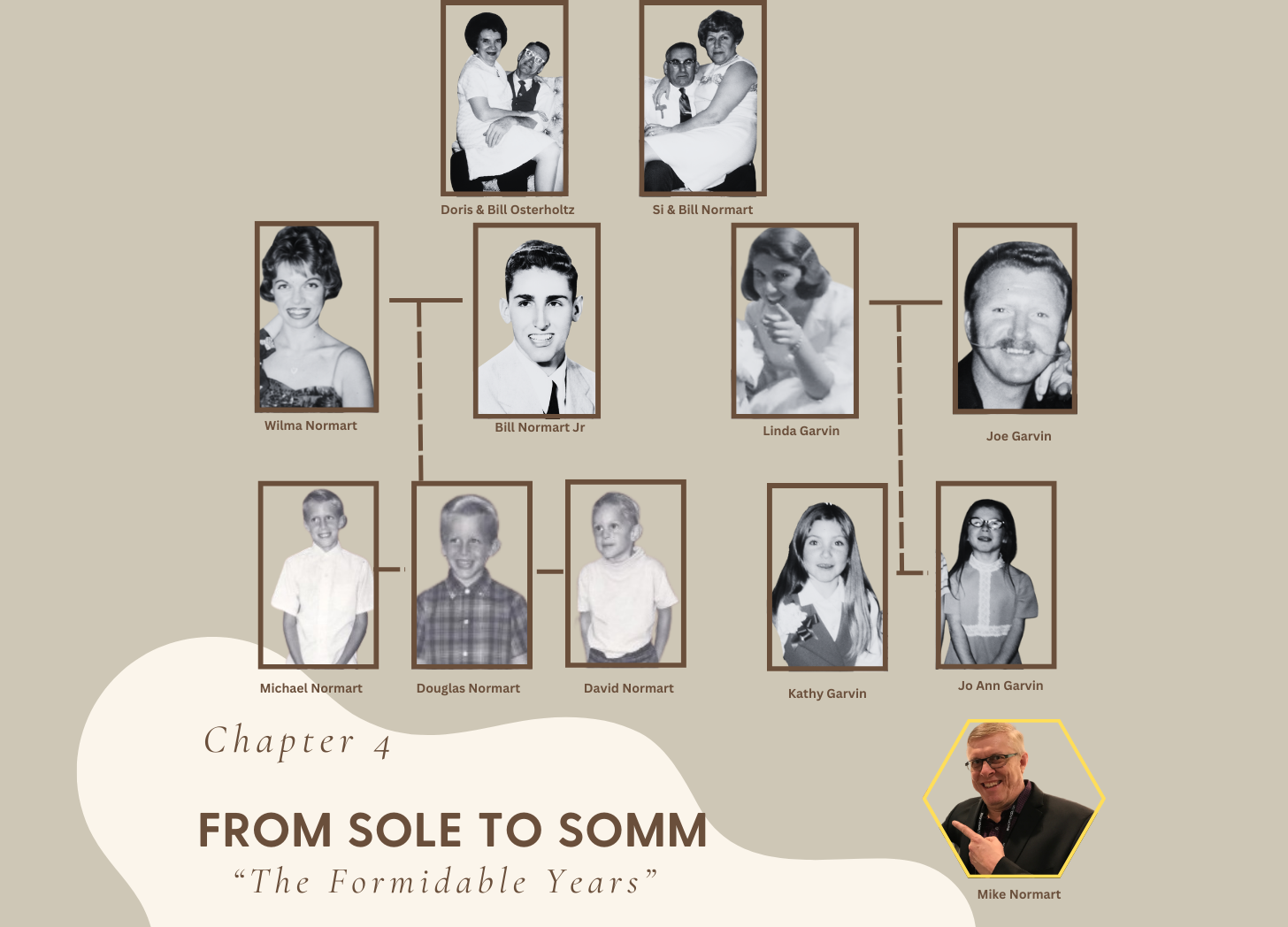Pairing Food & Wine
When it comes to enhancing a meal, the pairing of wine and food plays a pivotal role in elevating both the culinary experience and the enjoyment of the wine itself. This art, though rooted in tradition, offers ample space for creativity and personal expression. In this 7-part series, we will explore the art of pairing wine and food. In this blog, we’ll explore the foundational principles of wine and food pairing, identify common pitfalls to avoid, and suggest specific pairings that harmonize beautifully.
*Side Note:
I passed my level 3 Sommelier final, with an A- or 90.91%. Super stoked!! Waiting for the pin and official certificate which is nicer than the one I’ve been downloading for the first two levels. Ok back to food pairing…
Foundational Principles of Wine and Food Pairing
Pairing wine with food is not just a matter of taste—it’s about balance, contrast, and enhancement. Here are some key principles to consider:
- Balance in Weight and Intensity: The intensity of both the wine and the dish should match to avoid one overpowering the other. Lighter dishes, like a delicate fish or salad, pair well with lighter wines, such as Pinot Grigio or Sauvignon Blanc, while richer, heartier dishes, such as a beef stew, call for more full-bodied wines, like Cabernet Sauvignon or Syrah.
- Complementary Flavors: Similar flavors in both wine and food can enhance each other. A buttery Chardonnay complements dishes with creamy sauces, while a wine with citrus notes might pair well with a lemon-accented dish.
- Contrasting Flavors: Opposing flavors can create a pleasant balance. A crisp, acidic wine like Riesling can cut through the richness of a fatty dish, refreshing the palate. Similarly, the sweetness of a late harvest wine or Port contrasts beautifully with the saltiness of blue cheese or savory dishes. While these two examples work there are other things to avoid which I will cover in the Common Pairing Mistakes to Avoid section below.
- Tannins and Fat: Tannins in red wine interact wonderfully with fat in meat, as the tannins cut through the richness of the dish, cleansing the palate. This is why a tannic wine like Cabernet Sauvignon is a classic pairing for fatty cuts of beef.
- Acidity: Wines with high acidity can be very food-friendly. Acidity in wine acts similarly to how lemon juice can brighten a dish, highlighting flavors and cutting through fat. High-acid wines, like Sauvignon Blanc or Chablis, pair well with fatty foods or dishes with a heavy cream base.
- Spice and Alcohol: Spicy foods can be heightened by alcohol, so it’s generally best to pair spicy dishes with wines that have a lower alcohol content and perhaps a touch of sweetness, like an off-dry Gewürztraminer or Riesling, to temper the heat.
- Regional Pairings: When in doubt, pairing wine and food from the same region is a reliable guide. Regional food and wines have often evolved together over time and naturally complement each other, such as Italian Chianti with pasta in a tomato-based sauce or Spanish Rioja with Iberico ham.
- Sweetness: The wine should be at least as sweet as the dish it’s paired with. Desserts and sweet dishes can make dry wines taste sour, so it’s preferable to choose a wine that has a bit of sweetness for sweet dishes, like Moscato d’Asti with fruit desserts or Sauternes with foie gras.
By considering these principles, you can make informed decisions that enhance both the wine and the meal, leading to a more enjoyable dining experience. Remember, personal preference plays a significant role, and part of the fun is experimenting to discover what combinations work best for you.
Common Pairing Mistakes to Avoid
While the adventure of discovering your own favorite pairings can be exciting, there are a few common pitfalls:
- Overpowering Delicate Dishes: Serving a bold, heavy wine with a delicate dish can overwhelm the flavors of the food, making it taste bland or washed out. For example, a robust Cabernet Sauvignon might overpower a light seafood dish.
- Tannins vs. Spice: High-tannin wines can accentuate the heat in spicy dishes, making the wine taste bitter and the food uncomfortably spicy. It’s better to opt for wines with lower alcohol and softer tannins, possibly with a hint of sweetness.
- Acidity Misalignment: A wine with low acidity can taste flat and lifeless when paired with a dish that has higher acidity. Ensure your wine has equal or higher acidity than your food to maintain balance and freshness.
- Choosing Sweet Wines with Savory Dishes: While there are exceptions, particularly with spicy cuisine, overly sweet wines can clash with savory, non-spicy dishes. The sweetness can overshadow the nuanced flavors of the food.
- Mismatching Sweetness in Desserts and Wines: When a dessert is sweeter than the wine, it can make the wine taste tart and thin. Always aim for the wine to be as sweet as, or sweeter than, the dessert.
- Forgetting about the Sauce: Often, the sauce or the most dominant flavor of the dish should guide the pairing more than the protein. A wine that pairs well with chicken might not suit a chicken dish covered in a tangy barbeque sauce.
- Overlooking Bitter and Umami Combinations: Bitter wines and foods with high umami content (Pleasant savory taste) can sometimes result in an unpleasant metallic taste. This is particularly true with certain red wines and fish, where the iron content in the wine can clash with the fish, creating a fishy aftertaste.
- Serving Wines Too Warm or Too Cold: Temperature can significantly affect how a wine tastes and pairs with food. Serving a red wine too warm can make it taste overly alcoholic and flabby, while serving white wine too cold can mute its flavors and aromatics, reducing its pairing potential.
- Ignoring Personal Preferences: Ultimately, the best pairing is one that you enjoy. Strictly adhering to traditional pairing rules without considering your own or your guests’ preferences may not lead to the most enjoyable experience.
By avoiding these common errors, you can ensure a more pleasant pairing experience.
Suggested Pairings
Here are some thoughtful pairings that highlight the interaction between the wine and food flavors:
Seafood Pairings
- Oysters and Champagne: The effervescence and acidity of Champagne bring out the briny freshness of oysters.
- Seafood Linguine and Pinot Grigio: The crispness of Pinot Grigio cuts through the richness of the seafood sauce.
- Thai Shrimp Curry with Off-dry Riesling or Gewürztraminer: The slight sweetness and robust fruit flavors of these wines balance the heat and spices of the curry, enhancing the overall taste without overpowering it.
- New England Clam Chowder with Chardonnay: The buttery, oaky flavors of Chardonnay complement the creamy texture of the chowder.
Meat and Poultry Pairings
- Steak and Cabernet Sauvignon (Or Malbec): The classic pairing where the tannins in the Cabernet/Malbec cut through the fat of the steak.
- Duck Breast and Pinot Noir: The fruity notes of Pinot Noir complement the rich flavor of duck.
- Lamb Chops with Syrah/Shiraz or Rioja: The spicy, robust flavors of Syrah/Shiraz or the earthy, aged qualities of Rioja pair well with the gamey taste of lamb, highlighting its richness.
- Pork Ribs with Zinfandel or Barbera: Zinfandel’s bold, fruity flavors and Barbera’s high acidity cut through the richness of the ribs, complementing the smoky barbecue sauce.
Vegetarian and Vegan Pairings
- Mushroom Risotto and Pinot Noir: The earthy flavors of the risotto are echoed in the earthy notes of a light Pinot Noir.
- Grilled Vegetables and Grenache: The spicy notes of Grenache enhance the charred sweetness of the vegetables.
- Caprese Salad with Dry Rosé or Prosecco: The light, refreshing qualities of Dry Rosé or the effervescent sweetness of Prosecco complement the fresh tomatoes, mozzarella, and basil.
- Roasted Beet Salad with Merlot or Sparkling Rosé: The fruity, soft character of Merlot and the refreshing, bubbly aspect of Sparkling Rosé enhance the earthy sweetness of the beets.
Cheese Pairings
- Cheddar and Cabernet Sauvignon: The strong flavors of Cheddar meet their match in a bold Cabernet.
- Goat Cheese and Sauvignon Blanc: The tangy profiles of both the cheese and wine create a refreshing pairing.
- Brie with Champagne or Chardonnay: The creamy texture and mild flavors of Brie are complemented by the acidity and bubbles of Champagne or the rich, buttery profile of Chardonnay.
- Gruyere with Pinot Noir: The nutty and slightly sweet flavors of gruyere can compliment the red fruit and spice notes in Pinot Noir
Dessert Pairings
- Chocolate Cake and Port: The intensity of both the chocolate and the wine make for a luxurious combination.
- Tiramisu and Sweet Marsala: The Marsala highlights the coffee and mascarpone flavors in the tiramisu.
- Lemon Tart with Moscato d’Asti or Riesling: The light, sweet effervescence of Moscato d’Asti or the crisp acidity of Riesling complement the tartness of the lemon, balancing its citrusy sharpness.
- Cheesecake with Late Harvest Riesling: The rich creaminess of cheesecake is balanced by the intense sweetness and acidity of late harvest Riesling, highlighting the dessert’s subtle flavors.
By following these guidelines and suggestions, you can begin to explore the rich world of wine and food pairings on your own. Remember, the best pairings are often discovered through experimentation and personal preference. Enjoy the journey of discovering what works best for your palate!
Next week, we explore pairing Cabernet Sauvignon…

Subscribe to my Blog by filling out the info below and then press the “subscribe” button

From Sole to Somm – My Brothers and 1st Cousins

From Sole to Somm – The Impressionable Years

